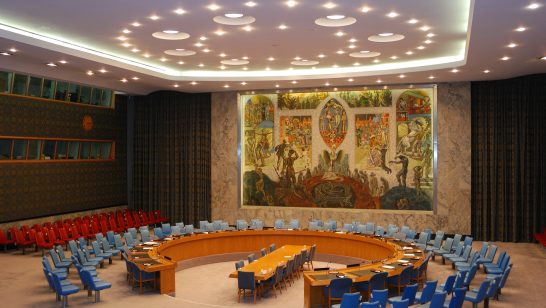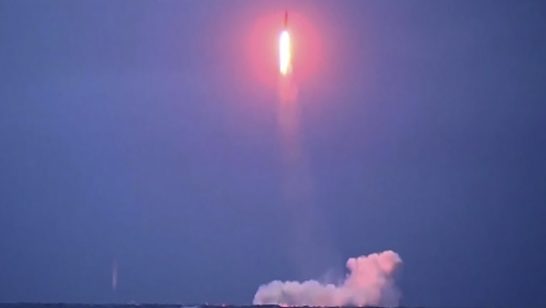
The five nuclear-weapon states recognised by the Non-Proliferation Treaty (NPT)—the P5—announced in December 2021 their commitment to discussing risk reduction through a dedicated “working group on nuclear doctrines and policies and strategic risk reduction”. Less than a month later, on 3rdJanuary 2022, the P5 jointly affirmed the Reagan-Gorbachev formula that “a nuclear war cannot be won and must never be fought.” These measures represent significant milestones, both in the history of the P5 process and the NPT as a whole – milestones which our organisation, the ELN, has called for since our work to support the P5 process began in 2019.
Risk reduction, encompassing both “nuclear” and “strategic” risks, has received no shortage of attention in the tenth review cycle of the NPT. But although States parties acknowledge the importance of risk reduction for the NPT, they disagree on the approach.
Unfortunately, this also means that many of the conversations about risk reduction are still about how to approach risk reduction rather than about how to implement specific risk reduction measures.
To be sure, the risk issue must be dealt with as comprehensively as possible in order to, as critics put it, “take nuclear weapons as far away from any use or accident as possible”. But the deteriorating security environment, fuelled by major power competition, makes a sustained risk reduction conversation, especially among the P5, a promising first measure to avert one of the biggest nuclear risks today: the risk of misinterpretation and miscalculation leading to an inadvertent escalation of conflict. Encouragingly, the P5 recognise this risk in their recent working paper: “Misunderstandings about military capability developments, doctrines, and the intentions underlying specific military activities are a common risk in security relations.”
To mitigate the risk of inadvertent escalation of conflict, we have called for a senior, open-ended and sustained dialogue process among the P5 on strategic risk reduction and crisis stability. The December 2021 P5 working paper on strategic risk reduction, formally announcing the incorporation of strategic risk reduction into the nuclear doctrines and dialogues working group “as [a] separate but related topic”, is an impactful and welcome first measure. Such a dedicated working group demonstrates that the P5 take seriously the concerns of non-nuclear-weapon states about growing nuclear risks and that the P5 are pursuing efforts to do more to promote risk reduction.
The P5 must now build on this momentum to discuss a substantive programme of work which must lead to the implementation of concrete risk reduction measures within the eleventh review cycle. Should the P5 not manage this, many non-nuclear-weapon States parties will likely sympathise with the view put forward by more critical non-nuclear-weapon States that risk reduction distracts from, and is not conducive to, the ultimate goal of nuclear disarmament. Indeed, critics allege that the strategic approach to risk reduction merely serves to make deterrence a little safer instead of making “progress on nuclear disarmament and the elimination of nuclear weapons, which is the risk reduction gold standard.”
To highlight their readiness to deal with the risk issue as comprehensively as possible along the doctrinal and escalatory pathways to nuclear use, the P5 states should carefully consult on the range of measures set forth by NPT States parties and civil society to enhance strategic stability. These include the following:
1. As per our 2020 recommendations memo that resulted from a year-long shadow process of the official P5 deliberations while the UK coordinated the P5 process in 2019-2020, the working group should now address the following questions and decide on measures to mitigate the risk of nuclear use arising from these activities:
a. “What actions, deployments, activities or behaviours could lead to misunderstandings or miscalculations that could trigger or exacerbate a crisis?”
b. “What are the implications for strategic stability of various kinds of systems – non-nuclear (e.g., missile defence, prompt global strike, cyber, counterspace), nuclear (e.g., non-strategic nuclear weapons), and novel (e.g., hypersonic glide vehicles, nuclear-powered cruise missiles)? What do you regard as the principal threats to strategic stability today?”
2. As per our 2022 working paper on strategic risk reduction, the P5 should also decide on:
a. “Practical measures to reduce the risk of the use of nuclear weapons by miscalculation through technical measures to foster confidence and through tools to increase communication (e.g., hotlines, risk reduction centres) as outlined by the Stockholm Initiative in working paper NPT/CONF.2020/WP.9 (paragraph 8, d, ii). In a developing crisis, these measures will help avoid misunderstandings by ensuring transparency over actions.”
b. a declaratory commitment to reduce the role and significance of nuclear weapons (in military and security concepts, doctrines and policies) to build on their joint affirmation that “a nuclear war cannot be won and must never be fought.”
c. “regular exchanges between the P5 and non-nuclear-weapon states on risk reduction.”
d. “(longer-term) measures to enhance strategic stability and to relaunch non-proliferation and disarmament dynamics, including a new arms control framework in Europe following the collapse of the INF Treaty as well as efforts to achieve a Fissile Material Cut-off Treaty (FMCT) and the entry into force of the Comprehensive Nuclear-Test-Ban Treaty (CTBT).”
One way to explore the viability of these measures for implementation in the eleventh NPT review cycle, while simultaneously increasing the transparency of the P5 risk reduction conversation and the P5-non-nuclear-weapon State interactions on this issue, might be for the P5 working group to commission an expert study to provide a comprehensive inventory of existing and historical global risk reduction measures.
These strategic risk reduction measures won’t just benefit the NPT. Agreeing on and implementing strategic risk reduction measures would also greatly benefit the work of the United Nations as a whole and the UN Security Council in particular. The UN Charter calls upon states “to unite our strength to maintain international peace and security,” and “to take effective collective measures for the prevention and removal of threats to the peace, and for the suppression of acts of aggression or other breaches of the peace, and to bring about by peaceful means, and in conformity with the principles of justice and international law, adjustment or settlement of international disputes or situations which might lead to a breach of the peace.”
A strategic risk reduction conversation among the P5 that results in substantive measures would clearly contribute both to “the prevention and removal of threats to the peace” and “to [the] develop[ment of] friendly relations among nations.” It adds more value than previously acknowledged and should be welcomed as such by all States parties.
The opinions articulated above represent the views of the author(s) and do not necessarily reflect the position of the European Leadership Network or any of its members. The ELN’s aim is to encourage debates that will help develop Europe’s capacity to address the pressing foreign, defence, and security policy challenges of our time.
Images: Flickr, U.S. Pacific Fleet




